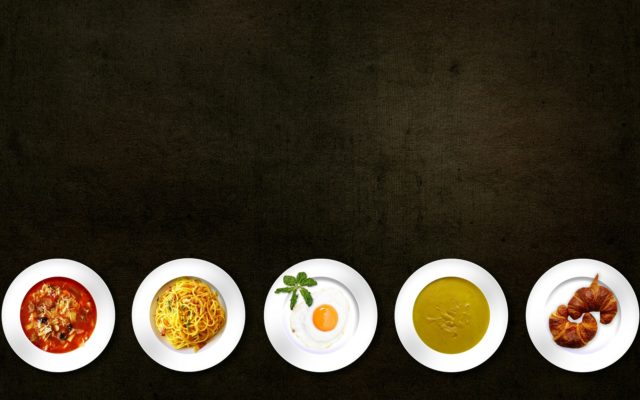The restaurant industry might be one of the most seemingly “old-fashioned” business models still out there, but you’d be wrong if you thought there wasn’t room to bring new technologies aboard. From planning daily operations to providing a more streamlined experience for customers, technology in food service is here to stay.
Analytics for Better Transparency and Accuracy
Analytics are everywhere these days. Even so, it might be a surprise to hear they’re making their way into the restaurant industry, too, and with compelling results.
Like any other business with lots of moving parts, operations planning in restaurants — and especially restaurant chains —is a full-time job. Analytics enter the picture with algorithms that can more accurately predict “throughput” times for prepared food alongside other factors like weather patterns, local traffic and other events, along with many other variables that impact wait times, customer demand and customer expectations.
The implications reach all the way from providing customers with more reliable predictions for when their food will be ready — which is especially important as more and more restaurant earnings come through digital platforms — to better inventory management. With 25 per cent of Panera’s orders coming through their app — and 60 per cent of Domino’s — it’s clear that major restaurants are more accessible and visible than ever. Providing customers with clear-cut expectations means earning their business again in the future.
But these new avenues for placing orders and making purchases also means restaurants need more intelligent tools to help ensure each one of their locations has all the ingredients and supplies they need when they need them. It’s all possible thanks to more intelligent operations planning tools, driven by algorithms and fueled by data.
A More Intelligent Approach to Staffing
Ensuring adequate staff coverage for a busy night, week or season is no simple task, as most restaurant managers know too well. Technology can enter the mix here in the form of employee scheduling optimization.
In fact, a lot of the work can now be automated entirely, or mostly, with a system like this. Instead of poring over employee schedule requests, historical staffing requirements and estimations of future needs, staffing software can now intelligently look over these variables and draw up a schedule that works for all parties.
The advantage is that managers can rest a little easier knowing they won’t be understaffed or overstaffed. It doesn’t just help reduce staffing headaches, either — it’s also a cost-cutting tool. More accurately forecasting staffing needs means restaurants can save on labour costs by not over-allocating staff during a certain interval. Some of the staffing software available currently can even bring in employee time-off requests and a multitude of other factors to further streamline the process.
Better Tools for Food Safety and Compliance
Some regulations are frivolous, but not many. In the food and beverage industries, especially, customers have to be able to count on meats being served at safe temperatures and that manufacturers abide by high cleanliness and packaging standards. Not surprisingly, a lot of the compliance happening — or not happening —in food service occurs in the kitchen, where cooks must take great care with the preparation methods of some foods and worry over the storage temperature of others.
The Hazard Analysis Critical Control Point (HACCP) system governs the operations and behaviours of a variety of industries involved with food and other high-risk products. It’s an important set of standards, but it also comes with a certain administrative burden. Employees and managers must, for example, use an ongoing log to measure and then record the operating temperature of some of their food storage and preparation equipment, including freezers and friers.
But Bluetooth temperature gauges can help reduce errors and falsification, not to mention significantly reduce the time it takes for managers and other staff to perform mandatory due diligence. Lapses in temperature control in food storage areas is a huge threat to the health of a restaurant’s patrons, so it makes good sense to bring aboard simple tools like these to take some of the paperwork out of the equation.
Different Kinds of Customer Interactions
Industries like food service and hospitality should always prioritize human interactions. Nevertheless, one of the ways digital technology can change the restaurant industry for the better is by facilitating different kinds of customer interactions.
It’s not about phasing out human waitstaff, hosts or concierges entirely. The draw here instead lies in taking some of the pressure off human employees and filling in service gaps. What’s a service gap? Think of busy sit-down restaurants and the fidgety customers who need to get to the theatre in time to catch the pre-show ads. An on-table kiosk can facilitate faster checkouts, even if that restaurant still lives and dies according to the personality and attentiveness of their servers. Additionally, evidence shows the presence of a kiosk can actually be a silent partner in successfully upselling customers on appetizers, drinks and more.
And then there are bars. An even more novel idea for restaurant technology involves turning the mob scene at your local watering hole or club into something that reduces customer frustration and makes sure glasses are never empty. Bar owners can find systems now that leverage RFID technology to let customers pre-pay for, and then pour their own drinks from draft beer selections and even wine dispensers. Patrons are already finding these systems fun and easy to use, and bar owners can rejoice in recovering some of the 23 per cent of a keg’s contents that go missing or get spilt during the busiest hours of operation.
Robot-Facilitated Food Preparation
We thought we’d save the best — or at least the most outlandish — entry for last. In the near future, it probably won’t be uncommon for restaurants to lean on robotics for more accurate and repeatable food preparation. There are already small operations out there where customers can place a food order on a touchscreen, then wait just a few minutes for a robot to prepare the food for them.
It’s going to take some time to scale something like that up to meet the demands of much larger restaurants and chains, not to mention more complicated edible fare, but it just goes to show what’s possible today — and what might be next.
Article by channel:
Everything you need to know about Digital Transformation
The best articles, news and events direct to your inbox







